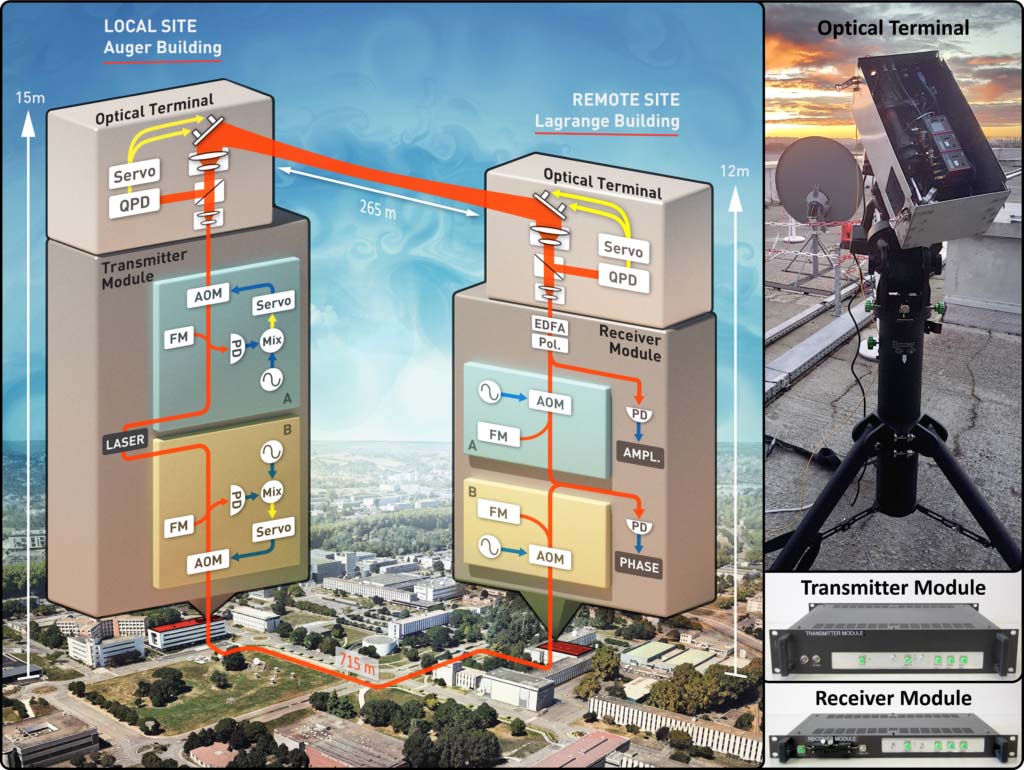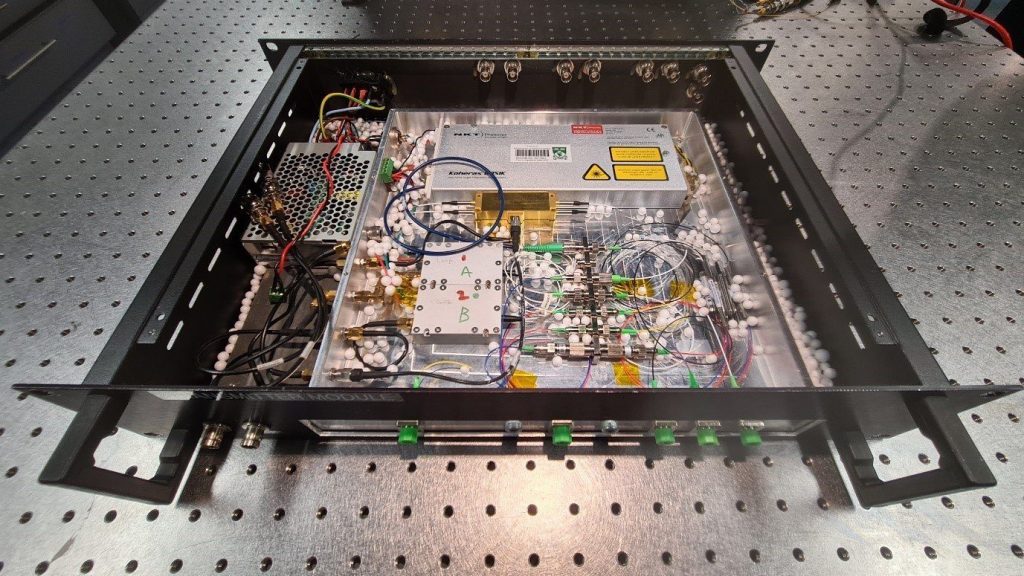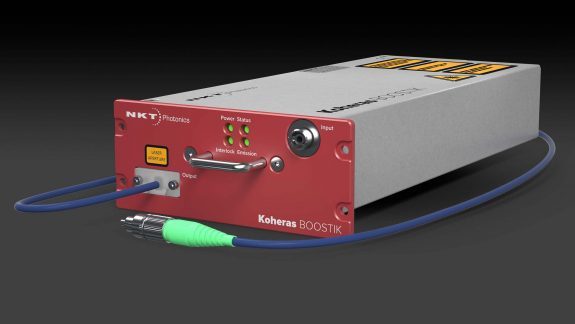In February 2020, Australian researchers led by Dr. Sascha Schediwy teamed up with researchers from the French National Centre for Space Studies (CNES) and the French metrology lab Systèmes de Référence Temps-Espace (SYRTE) at Paris Observatory to test the system over a 265 m free-space in Toulouse.
The experiment is described in an article in Nature Communications.
Coherent optical transmission with ultra-low residual frequency instabilities
The researchers demonstrated coherent optical transmission through the atmosphere with residual frequency instabilities below state-of-the-art optical atomic clocks.
The phase-stabilized transfer of optical-frequency signals over free-space laser links, particularly between ground stations and satellites, will enable advances in many applications such as:
- Geodesy using optical Doppler orbitography
- High-speed space-to-ground optical communications
- Tests of general relativity and fundamental physics via atomic clock timing
However, atmospheric turbulence induces phase perturbations of the transmitted optical signals which severely limits these applications.

A super stable laser made it possible
UWA developed a state-of-the-art optical transmission system that can suppress atmospheric phase-noise. The stabilization system was built by researchers Dr. Sascha Schediwy and Dr. Benjamin Dix-Matthews and relied heavily on the excellent linewidth of the NKT Koheras BASIK X15 fiber laser.
The system works by reflecting a portion of the optical signal received at the far end of the free-space link. This reflected portion is used to measures the round-trip phase noise and to actively pre-compensate the transmission to account for the atmospheric phase-noise effects. The high-quality optical reference of the BASIK X15 OEM module was vital for achieving ultra-stable coherent free-space transmission.
Its rugged and compact design allowed the researchers to build a robust, practical, and field-deployable system. The system was so robust that it could be shipped from Australia to France in 2020 and used to perform their cutting-edge coherent free-space optical transmission demonstration.

Get more details
The experiment was published in an article in Nature Communications in January 2021.
Or read more recent articles from 2022; Laser Propagating through Air Sets Stability Record and Ultra-stable Free-Space Laser Links for a Global Network of Optical Atomic Clocks.
The people behind it
UWA’s Astrophotonics Group
Focused on designing, building, and testing advanced photonic systems with applications in radio astronomy, optical astronomy, and space science, the group’s core technological capability is the long-distance transfer of stabilized optical-frequency and microwave-frequency signals across optical fiber networks and free-space laser links
Meet the researchers

Benjamin Dix-Matthews is a Ph.D. candidate at the University of Western Australia, working on the stabilization of free-space optical links for metrology, geodesy, and communications. Having previously completed a Masters in Electronic Engineering, he has experience in the technical process of designing, prototyping, and testing electrical and optical systems.
Benjamin’s research has focused on leveraging phase-stabilization technology developed at UWA and applying it to ultra-stable optical signal transmissions through the atmosphere for use in high-speed communications, geoscience, and fundamental physics. His work has led to international collaboration with both private and public organizations around the world. His published work includes cutting-edge techniques for orbitography, optical clock comparisons, and high-speed optical communications.

Sascha Schediwy is a Senior Research Fellow, and the leader of the Astrophotonics research group at the University of Western Australia, working on cutting-edge research within the fields of high-precision astronomy and space instrumentation.
Dr. Schediwy’s past research includes planetary science analyzing NASA Apollo lunar samples; a doctorate in gravitational wave instrumentation working on the development of Advanced LIGO; a postdoctoral position at the University of Oxford working on the development of phased array technologies for the Square Kilometre Array (SKA) telescope; and followed by research on optical fiber frequency metrology back at UWA.
Dr. Schediwy now leads an international team on the development and construction of the SKA Phase Synchronisation System, and his current focus is in combining this phase synchronizing technology with adaptive optics techniques used in cutting-edge optical telescopes, to pioneer the emerging field of free-space optical frequency transfer.
National Centre for Space Studies (CNES), France
The Centre national d’études spatiales (CNES) (English: National Centre for Space Studies) is the French space agency. Established in 1961, its headquarters are in central Paris and under the supervision of the French Ministries of Defence and Research. It operates out of the Toulouse Space Center and Guiana Space Centre but also has payloads launched from space centers operated by other countries.
Metrology Lab Système de Référence Temps-Espace (SYRTE), France
The SYRTE (SYstèmes de Référence Temps Espace) is a department of the Paris Observatory, performing the role of France’s national metrology institute. Combining high-level research and scientific services, SYRTE is at the forefront of various disciplinary fields including time and frequency metrology and celestial reference systems.

Members of the project team in front of a telescope dome at the CNES campus in Toulouse. The dome contains one of the self-guiding optical terminals. Credit: ICRAR/UWA.




